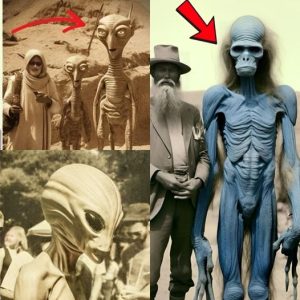Over the past several decades, there has been a significant amount of discussion and speculation surrounding the phenomenon of alien encounters. The intriguing concept of extraterrestrial beings visiting Earth has captivated the imagination of both scientists and the general public. This article delves into the history of these encounters, examining various instances of alleged interactions between aliens and humans.
The mid-20th century marked the beginning of widespread reports of alien encounters. The infamous 1947 Roswell incident, where a supposed UFO crashed in New Mexico, sparked intense interest and speculation. Witnesses claimed to have seen alien bodies, and the U.S. government’s handling of the incident fueled conspiracy theories that continue to this day.

Throughout the years, there have been numerous reports of alien encounters, each with its own unique details and implications. For example, the 1961 abduction of Betty and Barney Hill is one of the most well-documented cases. The couple claimed to have been taken aboard a spacecraft and subjected to various experiments. Their story, supported by hypnosis sessions, brought the concept of alien abductions into the mainstream.
Another significant case is the 1975 abduction of Travis Walton, who disappeared for five days after a supposed UFO encounter. Walton’s story, supported by polygraph tests and multiple eyewitnesses, has been the subject of books and a feature film, further embedding the idea of alien encounters in popular culture.
Over the years, various governments have been accused of covering up evidence of alien encounters. Declassified documents and whistleblower testimonies have added fuel to these claims. In recent years, there has been a push for greater transparency, with governments releasing previously classified information about UFO sightings and investigations.
For instance, the U.S. Department of Defense’s release of Navy pilot videos showing unidentified aerial phenomena (UAP) has reignited public interest and speculation. These videos, which depict fast-moving objects with no visible means of propulsion, have led to renewed calls for comprehensive investigations into the existence of extraterrestrial life.
The scientific community remains divided on the issue of alien encounters. While some scientists are open to the possibility of extraterrestrial life, they often stress the need for empirical evidence. Astrobiologists and astronomers continue to search for signs of life beyond Earth, using advanced technology to scan the cosmos for any signals that might indicate intelligent life.
On the other hand, skeptics argue that many reported alien encounters can be explained by natural phenomena, psychological factors, or outright hoaxes. They emphasize the importance of critical thinking and rigorous investigation before drawing any conclusions about the existence of extraterrestrial beings.
The concept of alien encounters has had a profound impact on popular culture, inspiring countless books, movies, and television shows. From the classic sci-fi series “The X-Files” to blockbuster films like “Close Encounters of the Third Kind,” the idea of humans interacting with aliens continues to captivate audiences.

As we move forward, the quest to understand alien encounters will likely intensify. Advances in technology and continued exploration of space may eventually provide definitive answers about the existence of extraterrestrial life. Until then, the history of alien encounters remains a fascinating and mysterious aspect of human experience, blending science, speculation, and imagination.
In conclusion, examining human interactions with aliens over the years reveals a rich tapestry of stories and theories. Whether viewed as evidence of extraterrestrial visits or as reflections of human curiosity and fear, these encounters continue to intrigue and inspire. As we continue to explore the universe, the possibility of discovering intelligent life beyond Earth remains one of the most exciting prospects in the field of science





